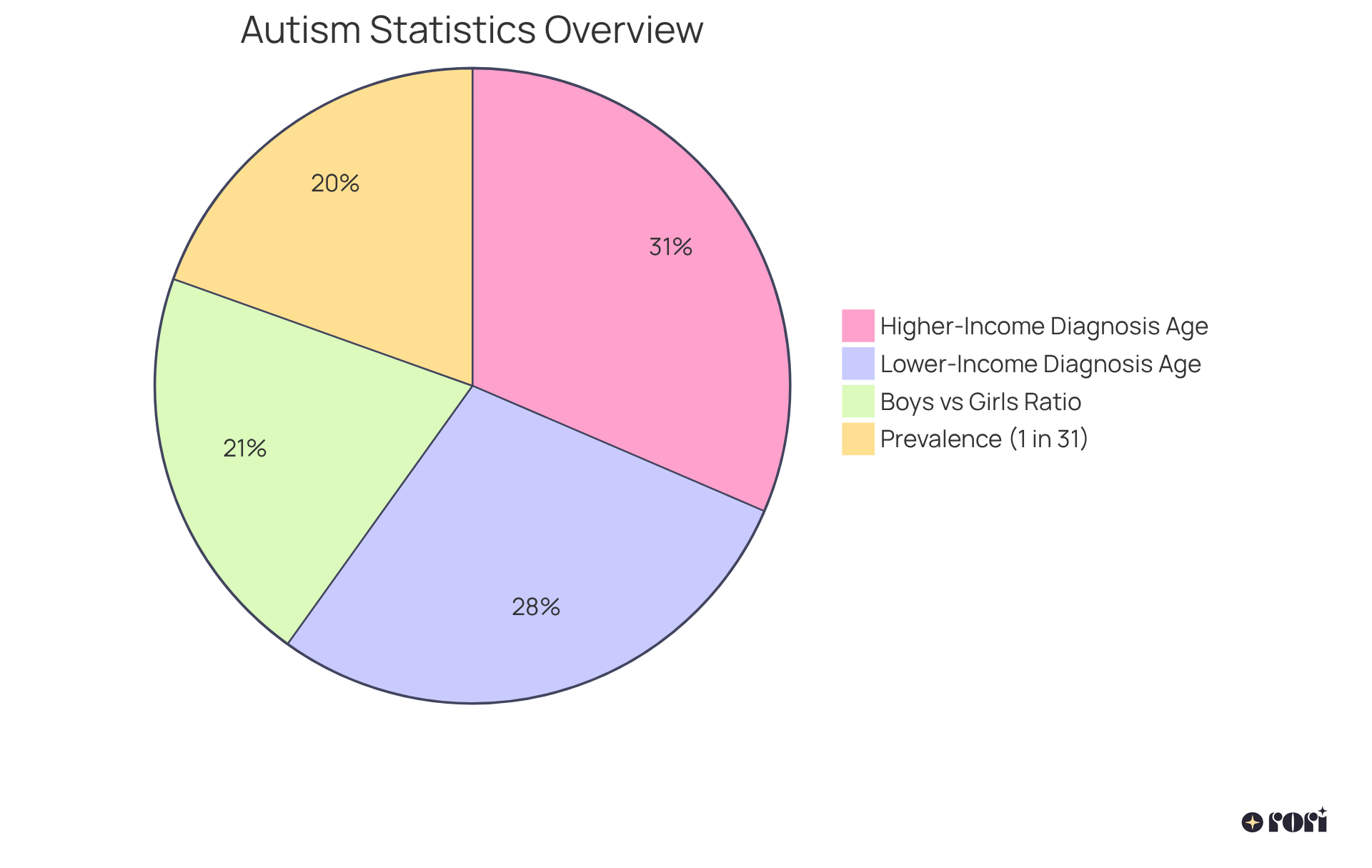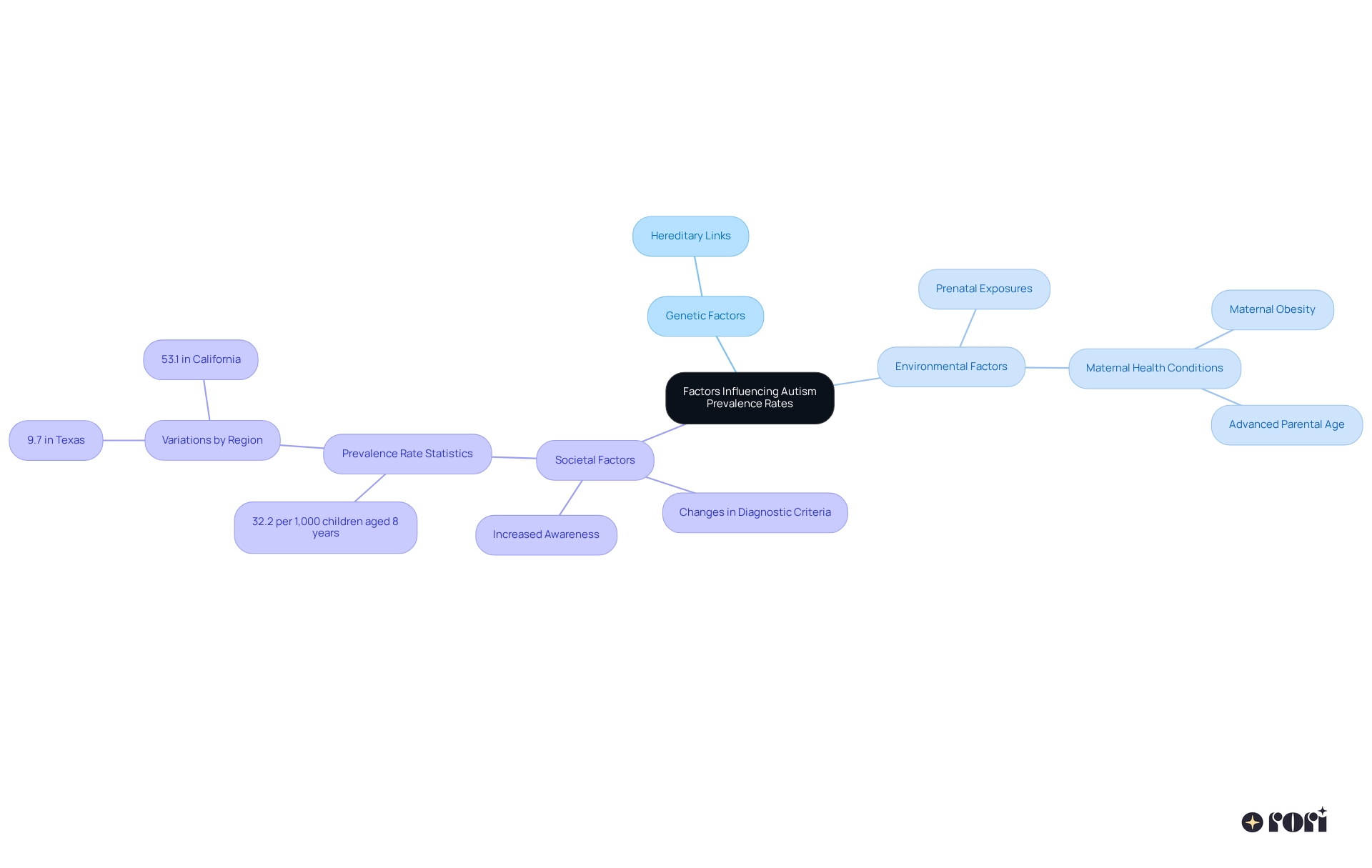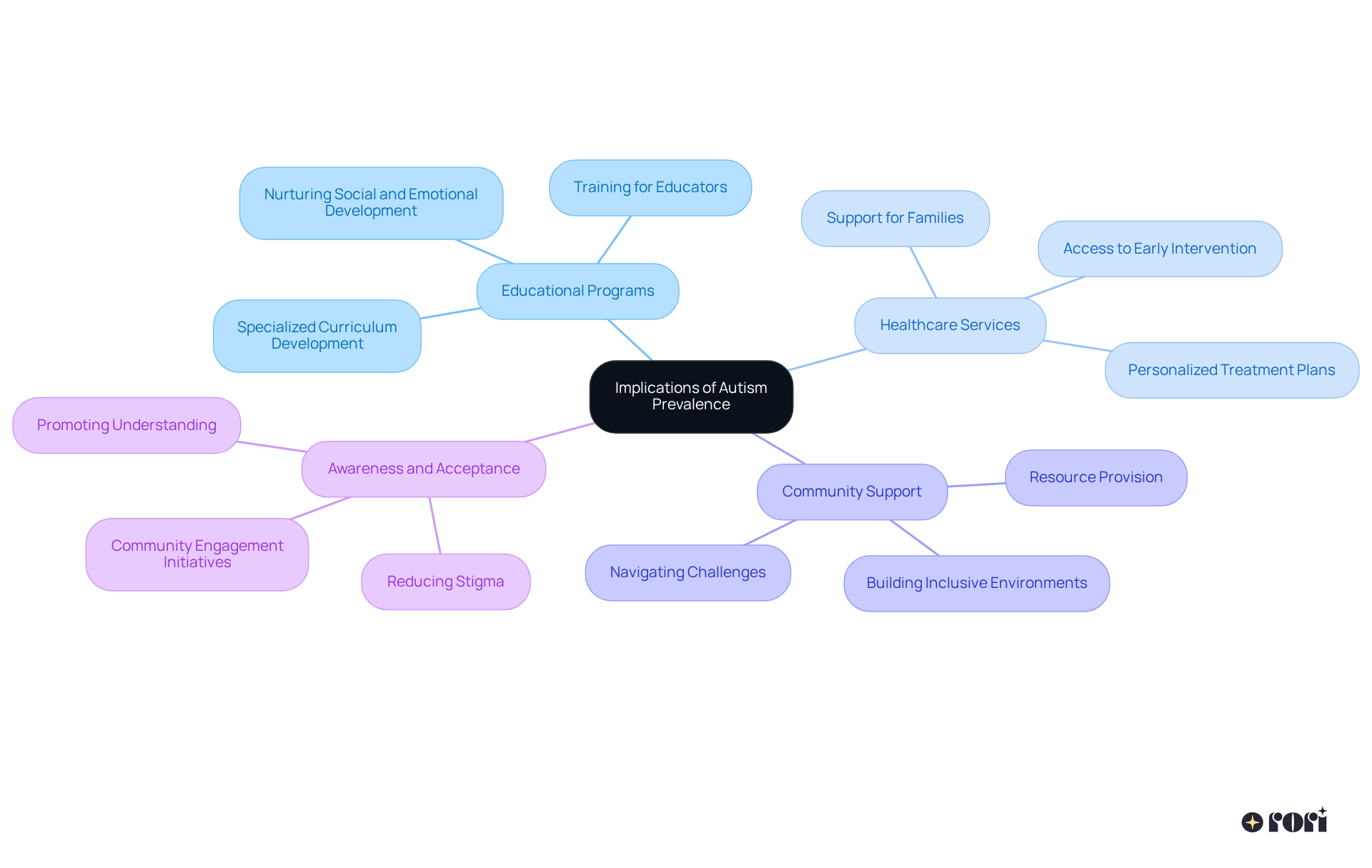Did you know that about 1 in 36 young individuals are on the autism spectrum? This statistic highlights a significant prevalence of Autism Spectrum Disorder (ASD) in our communities. Recent data from the CDC sheds light on this topic, discussing how increased awareness, refined diagnostic criteria, and better access to healthcare are all contributing to more people being identified with ASD.
It’s important to recognize the challenges this brings to families. Many parents share their experiences of navigating the healthcare system and seeking support. If you’re feeling overwhelmed, remember, you’re not alone! Let’s explore this together and find the resources that can help you every step of the way!
The growing awareness of Autism Spectrum Disorder (ASD) is opening up important conversations about its prevalence in our communities. Did you know that about 1 in 31 youths in the U.S. are diagnosed with this complex neurodevelopmental condition? This statistic really highlights the need for increased awareness and early intervention. As we navigate the evolving landscape of autism diagnosis, it’s natural to wonder about the factors that influence these rates and what it means for us as a society.
How can we, as communities, come together to support individuals on the spectrum and their families in this diverse world? Let’s explore this together! Your thoughts and experiences matter, and they can help shape a more inclusive environment for everyone.
Autism Spectrum Disorder (ASD) is a complex neurodevelopmental condition that brings a variety of challenges in social interaction, communication, and behavior. The term 'spectrum' highlights the wide range of experiences—both difficulties and strengths—seen in individuals with ASD. Symptoms typically show up in early childhood, impacting daily life and overall well-being.
Did you know that, according to the Diagnostic and Statistical Manual of Mental Disorders (DSM-5), ASD is categorized into different levels of severity? This classification helps tailor interventions and support strategies to meet individual needs. Recent statistics reveal what percentage of the population is on the autism spectrum, as about 1 in 31 children in the U.S. are diagnosed with a developmental disorder, which underscores the importance of early detection and intervention.
Interestingly, children from lower-income families are diagnosed at an average age of 4.7 years, while those from higher-income families are diagnosed at 5.2 years. Plus, boys are found to be 3.4 times more likely than girls to receive an autism diagnosis.
At Rori Care, our clinical leadership team is passionate about understanding the intricacies of ASD and its significant impact on individuals and families. We’re committed to addressing the diverse needs of those affected by this condition through our focus on neurodiversity and personalized support strategies. Let’s explore this journey together, and remember, we’re here to help you every step of the way!

Recent studies suggest that the prevalence of Autism Spectrum Disorder (ASD) in the United States, specifically what percentage of the population is on the autism spectrum, has increased to about 1 in 31 youths, as reported by the Centers for Disease Control and Prevention (CDC) in 2025. This marks a significant rise from earlier projections, reflecting a growing awareness and identification of ASD among youth. It's important to understand that factors contributing to this rise include:
Did you know that the median age for a diagnosis is now 47 months? Approximately half of the youngsters are assessed by age three! This trend highlights the essential need for families, educators, and healthcare providers to understand what percentage of the population is on the autism spectrum. By doing so, we can ensure that sufficient resources and support systems are created to meet the needs of youth with developmental disorders.
Additionally, the CDC's findings reveal that boys are diagnosed with developmental disorders at a rate of 49.2 per 1,000 children, compared to 14.3 per 1,000 girls. This emphasizes the differences in diagnosis rates between genders. As the landscape of developmental disorder diagnosis continues to evolve, it’s crucial for all of us—stakeholders, families, and friends—to stay informed and proactive in supporting those affected. Let’s explore this together and ensure that no one feels alone on this journey!

The prevalence rates of Autism Spectrum Disorder (ASD) help to determine what percentage of the population is on the autism spectrum, influenced by a mix of genetic, environmental, and societal factors. You might find it interesting that genetic predisposition plays a significant role; studies show that ASD often runs in families, hinting at a hereditary link. On the environmental side, things like prenatal exposure to certain medications, toxins, or maternal health conditions can raise the risk of developing ASD. For instance, factors such as maternal obesity and advanced parental age at conception may contribute to this risk.
Now, let’s talk about societal influences. Increased awareness and changing diagnostic criteria have led to more kids being identified and diagnosed with the condition. For example, the Autism and Developmental Disabilities Monitoring Network shared that the data indicated what percentage of the population is on the autism spectrum among children aged 8 years was about 32.2 per 1,000 in 2022. This reflects a growing recognition of the condition. You’ll notice variations in prevalence rates across regions, which can reflect what percentage of the population is on the autism spectrum, ranging from 9.7 in Texas to 53.1 in California. This highlights how local environmental factors and healthcare access can impact the recognition of ASD.
Understanding these complex factors is essential for creating effective interventions and support systems for families dealing with developmental disorders. By addressing both genetic and environmental aspects, we can better tailor strategies to improve outcomes for youth with ASD and their families. Let’s explore this together and find the best ways to support those we care about!

The rising prevalence of Autism Spectrum Disorder (ASD) prompts us to consider what percentage of the population is on the autism spectrum and has important implications for our society. With 1 in 36 young individuals diagnosed as of 2023, there’s a pressing need to consider what percentage of the population is on the autism spectrum when developing specialized educational programs and healthcare services that address their unique challenges. This growing demand emphasizes the need for a shift in how we approach developmental disorder care, focusing on early intervention and personalized treatment plans that truly address each child's specific needs.
Educators emphasize the importance of creating specialized programs that not only fulfill academic requirements but also nurture social and emotional development. Community support frameworks are vital in this context, providing resources and connections that help families navigate the challenges associated with developmental disorders.
Moreover, the increasing occurrence of developmental disorders adds extra pressure on our healthcare systems, highlighting the need for better access to services and support. By raising awareness and fostering understanding within our communities, we can cultivate a more inclusive environment that reduces stigma and promotes acceptance. Ultimately, addressing the implications of autism prevalence is crucial for ensuring that individuals with ASD receive the comprehensive support they need to thrive. Let’s explore this together and make a difference in the lives of those affected!

Exploring Autism Spectrum Disorder (ASD) really shines a light on an important part of our society today. Did you know that about 1 in 31 children in the U.S. are diagnosed with this complex condition? This statistic highlights how crucial it is to understand the diverse experiences of those on the spectrum and the need for tailored support and early intervention strategies to tackle their unique challenges.
Recent studies show that the prevalence of ASD is on the rise, influenced by factors like genetic predisposition, environmental influences, and growing societal awareness. Interestingly, boys are diagnosed at a much higher rate than girls, and differences in prevalence across regions often reflect varying levels of healthcare access and awareness. Understanding ASD comprehensively is essential for families, educators, and healthcare providers who want to create effective support systems.
The implications of this rising autism prevalence reach far beyond individual diagnoses. They affect educational frameworks, healthcare services, and even societal attitudes. By fostering awareness and promoting inclusivity, communities can better support individuals with ASD and their families. It’s so important to advocate for improved access to resources and to cultivate an environment that embraces neurodiversity, ensuring everyone has the chance to thrive.
Together, we can make significant strides in understanding and supporting those on the autism spectrum. Let’s pave the way for a more inclusive future, where everyone feels valued and understood. We’re here to help you every step of the way!
What is Autism Spectrum Disorder (ASD)?
Autism Spectrum Disorder (ASD) is a complex neurodevelopmental condition characterized by challenges in social interaction, communication, and behavior. It encompasses a wide range of experiences, both difficulties and strengths, and symptoms typically emerge in early childhood.
What does the term 'spectrum' mean in relation to ASD?
The term 'spectrum' refers to the wide range of experiences and symptoms that individuals with ASD can have, highlighting that the condition can manifest differently in each person.
How is ASD categorized according to the DSM-5?
According to the Diagnostic and Statistical Manual of Mental Disorders (DSM-5), ASD is categorized into different levels of severity, which helps in tailoring interventions and support strategies to meet individual needs.
What are the statistics regarding ASD diagnoses in children?
Approximately 1 in 31 children in the U.S. are diagnosed with a developmental disorder, emphasizing the importance of early detection and intervention. Additionally, children from lower-income families are diagnosed at an average age of 4.7 years, while those from higher-income families are diagnosed at 5.2 years.
Are there differences in ASD diagnosis rates between boys and girls?
Yes, boys are found to be 3.4 times more likely than girls to receive an autism diagnosis.
What is Rori Care's approach to supporting individuals with ASD?
Rori Care focuses on understanding the intricacies of ASD and its impact on individuals and families, addressing diverse needs through a commitment to neurodiversity and personalized support strategies.